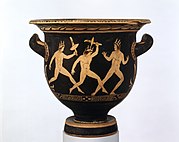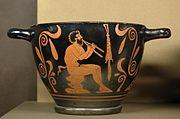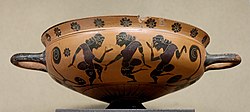Liste der griechischen Töpfer und Vasenmaler/K
Namentlich bekannte Künstler
| |||||||||||||||||||||||||||||||||||||||||||||||||||||||||||||||||||||||||||||||||||||||||||||||||||||||||||||||||||||||||||||||||||||||||||||||||||||||||||||||||
Nicht namentlich bekannte Künstler (Notnamen)
| |||||||||||||||||||||||||||||||||||||||||||||||||||||||||||||||||||||||||||||||||||||||||||||||||||||||||||||||||||||||||||||||||||||||||||||||||||||||||||||||||||||||||||||||||||||||||||||||||||||||||||||||||||||||||||||||||||||||||||||||||||||||||||||||||||||||||||||||||||||||||||||||||||||||||||||||||||||||||||||||||||||||||||||||||||||||||||||||||||||||||||||||||||||||||||||||||||||||||||||||||||||||||||||||||||||||||||||||||||||||||||||||||||||||||||||||||||||||||||||||||||||||||||||||||||||||||||||||||||||||||||||||||||||||||||||||||||||||||||||||||||||||||||||||||||||||||||||||||||||||||||||||||||||||||||||||||||||||||||||||||||||||||||||||||||||||||||||||||||||||||||||||||||||||||||||||||||||||||||||||||||||||||||||||||||||||||||||||||||||||||||||||||||||||||||||||||||||||||||||||||||||||||||||||||||||||||||||||||||||||||||||||||||||||||||||
Künstler-Gruppen
| |||||||||||||||||||||||||||||||||||||||||||||||||||||||||||||||||||||||||||||||||||||||||||||||||||||||||||||||||||||||||||||||||||||||||||||||||||||||||||||||||||||||||||||||||||||||||||||||||||||||||||||||||||||||||||||||||||||||||||||||||||||||||||||||||||||||||||||||||||||||||||||||||||||||||||||||||||||||||||||||||||||||||||||||||||||||||||||||||||||||||||||||||||||||||||||||||||||||||||||||||||||||||||||||||||||||||||||||||||||||||||||||||||||||||||||||||||||||||||||||||||||||||||||||||||||||||||||||
Einzelnachweise
- ↑ Rotfirnis
Auf dieser Seite verwendete Medien
Apulian red-figure dish with fish, ca. 350–325 BC.
This red-figure stemless kylix depicts Nike and a king in tondo. She stands on the left in profile to the right, gesturing with both hands at her sides. He faces her holding a scepter upright in his right hand. She wears a chiton, mantle, and earring, and he a mantle; her hair is held in place by a cloth wrapping decorated with dots.
On the sides of the kylix Hermes is depicted pursuing a woman. On the front, Hermes rushes right holding out a kerykeion in his left hand. He pursues a woman who runs right, looking around. She extends her right hand toward him. He wears a chlamys and traveller's sandals, and has a petasos hanging down his back. She wears a chiton and mantle.
On the back, Hermes runs to the left, his draped left arm extended. He wears a chlamys with brooch and traveller's sandals; a petasos hangs down his back. He holds a kerykeion behind in his right hand. The woman runs left looking around, arms extended to either side. She wears a chiton, mantle, and earring. Her hair is held in place by a cloth wrapping decorated with dots. Between the two falls a sprig which she may have originally held.
Gods pursuing their loves is a common subject on 5th-century Attic red-figure vases, but Hermes is represented less frequently than many other gods. Since none of the women Hermes pursues is inscribed or has an attribute that reveals her identity, they must remain nameless.Autor/Urheber: Group of the British Museum centaur, Lizenz: CC BY 2.5
Woman holding a mirror and a tambourine facing a winged genie with a ribbon and a branch with leaves. Red-figure oinochoe, ca. 320 BC. From Magnia Graecia.
Autor/Urheber:
Kriegerabschied. Seite A von einer attischen rotfigurigen Stamnos, 440-430 v. Chr. Aus Vulci.
Theseus pursuing a woman, probably Helen. Side A from an Attic red-figure bell-krater, c. 440–430 BC. Louvre, Paris
Autor/Urheber: , Lizenz: CC0
Autor/Urheber: Anagoria, Lizenz: CC BY 3.0
Jüngling und Mädchen umarmen sich, Innenbild (Tondo) einer attisch-rotfigurigen Trinkschale (Kylix), Namenvase des Kuß-Malers, gefunden in Chiusi, um 520/10 v. Chr.; Antikensammlung Berlin/Altes Museum, Inventarnummer F 2269
Spacer image
Autor/Urheber:
Hoplites fighting. Detail from an Attic black-figure hydria, ca. 560 BC–550 BC.
Autor/Urheber: Gruppe von Kopenhagen 114, Lizenz: CC BY 2.5
Boxer und Trainer: Der rechte Boxer geht zu Boden und gibt mit ausgestreckter Hand und Finger das Zeichen zur Aufgabe. Sein Gegner dringt trotzdem weiter auf ihn ein und wird deshalb vom Kampfrichter mit einer langen Gerte geschlagen. Seite A von einer attischen schwarzfigurigen Halsamphora, 510-500 v. Chr. Aus Vulci.
Autor/Urheber:
Soulder: master of the animals and animals; legs: sirens and animals. Attic black-figure tripod exaleiptron attributed to the "C" Painter, 580–570 BC. From Ægina.
Komos scene. Attic black-figure komast cup
Autor/Urheber: , Lizenz: CC0
Autor/Urheber: Zde, Lizenz: CC BY-SA 4.0
Perspective (spatially illusive) painting on pottery by the Konnakis Group, 360-350 BC, Taranto, Greek Italy. Maybe it shows the scene before Apollo's temple; Loan of the Martin-von-Wagner-Museum in Würzburg.
Autor/Urheber: Zde, Lizenz: CC BY-SA 4.0
Kabeiric black-figure skyphos. A. The hunter Kephalos. From the Kabeirion at Thebes. By the Kabeiros Painter, late 5th century BC. National Archaeological Museum of Athens n. 10425.
Autor/Urheber: Picture taken by Marcus Cyron, Lizenz: CC BY-SA 3.0
Da ich derzeit nicht dazu komme, all meinen Bildbestand angemessen aufzubereiten, andererseits aber das material nicht sinnlos auf dem PC verkommen lassen will, habe ich mich entschlossen es mitsamt eventueller Begleittexte (die dann gelöscht werden sollten) quasi als Rohmaterial hochzuladen. Jeder ist herzlich eingeladen, Beschreibungen hinzuzufügen, Titel zu verbessern, Kategorisieren etc.
Autor/Urheber: Picture taken by Marcus Cyron (photo), Lizenz: CC BY-SA 3.0
Frühe attisch-schwarzfigurige Olpe des Kerameikos-Malers; obere Zone: geflügelter Jüngling (Aristaios) zwischen Löwen, untere Zone: Sirenen, Panter und Lotusblumen; um 600 v. Chr.; Archäologisches Nationalmuseum Athen (16285)
Menelaus (centre-left) pursues Paris (centre-right) as Aphrodite (left) and Artemis (right) watch on. Side A from an Attic red-figure kylix, ca. 490–480 BC. From Capua.
Sacrifice scene, with kalos inscription. Detail from an Attic red-figure oinochoe, ca. 430-425 BC.
Exhibit in the Museo Gregoriano Etrusco - Vatican Museums.
Autor/Urheber: Painter of the Mourning Trojan Women, Lizenz: CC BY-SA 3.0
Autor/Urheber: Knudsen-Gruppe , Lizenz: CC0
Autor/Urheber: , Lizenz: CC BY-SA 4.0
Dieses Bild zeigt ein Denkmal, das zum Kulturerbe Italiens gehört. Dieses Denkmal nimmt am Wettbewerb Wiki Loves Monuments Italia 2016 teil.
Autor/Urheber: , Lizenz: CC0
Satyr playing the aulos. Side A from an Lucanian (Metapontium) red-figure skyphos, ca. 400–390 BC.
Autor/Urheber: Picture taken by Marcus Cyron, Lizenz: CC BY-SA 3.0
Etruskisch-orientalisierende Halsamphora, produziert in Ceverteri (Caere); das Hauptbild hat einen Bezug zur Argonautensage: der an der Argonautensage beteiligte Sänger Orpheus spielt als Krieger gekleidet zum Waffentanz jüngerer Argonauten, der Wasserspeier rechts von seinem Kopf deutet einen heiligen Bezirk an, das Halsbild zeigt einen Löwen, in falscher Interpreteation der ostgriechischen Vorbilder gibt der Maler der sogenannte Kithara-Maler (Pittore dell'Eptacordo) zwar Ober- und Unterkiefer sowie die Zunge wieder, doch setzt er das Auge statt in den Köpf über die Zunge; um 470/60 v. Chr.; Leihgabe Takuhito Fujita an die Antikensammlung Würzburg, Inventarnummer ZA 66.
Abschied des Kriegers. Seite A von einer attischen rotfigurigen Bauchamphora.
Youth using an oinochoe (wine jug, in his right hand) to draw wine from a crater, in order to fill a kylix (shallow cup, in his left hand). His nudity shows that he is serving as a cup-bearer in a symposium, or banquet. Kalos inscription. Tondo of an Attic red-figure cup, ca. 490-480 BC.
Athena bringt Herakles in ihrem Wagen zum Olymp. Seite A von einer rotfigurigen attischen Pelike, um 420-400 v. Chr. Aus Vulci.
Autor/Urheber: Picture taken by Marcus Cyron, Lizenz: CC BY-SA 3.0
Da ich derzeit nicht dazu komme, all meinen Bildbestand angemessen aufzubereiten, andererseits aber das material nicht sinnlos auf dem PC verkommen lassen will, habe ich mich entschlossen es mitsamt eventueller Begleittexte (die dann gelöscht werden sollten) quasi als Rohmaterial hochzuladen. Jeder ist herzlich eingeladen, Beschreibungen hinzuzufügen, Titel zu verbessern, Kategorisieren etc.
Physician treating a patient. Red-figure Attic aryballos, ca. 480–470 BC.
Naiskos. A-Seite eines apulisches rotfiguriges Volutenkraters, um 340 v. Chr.
Musa reading a volumen (scroll), at the left an open chest. Attic red-figure lekythos, ca. 435-425 BC. From Boeotia.
Autor/Urheber:
Comic with a comic actor
Autor/Urheber: Kodros Painter, Lizenz: CC BY-SA 4.0
Theseus cycle of deeds: centre, Minotaur; around, clockwise from top, Kerkyon, Prokrustes, Skiron, bull, Sinis, sow. Attic red-figured kylix, ca. 440-430 BC. From Vulci.
Autor/Urheber: Zde, Lizenz: CC BY-SA 3.0
Athletes. Red-figure painting on the bottom of the cup. Koropi Painter, 450-425 BC. Archaeological Museum of Mykonos.
Autor/Urheber: ArchaiOptix, Lizenz: CC BY-SA 4.0
object type / vase shape: attic red figure hydria
- description shoulder: judgement of Paris: above: Zeus seated with thunderbolt and sceptre, Bust of Eris, Eudaimonia seated, Helios in his quadriga rising; below: Eukleia seated, Hera with diadem and sceptre, Athena with helmet, shield and spear, Alexandros (Paris) in Phrygian dress seated, flying Eros talkting to him, dog, Hermes with Kerykeion, Aphrodite seated, Eros; name inscriptions faded - lower belly zone: beardless young Dionysos standing with thyrsos, satyrs and maenads playing music and dancing - production place: Athens - painter: Painter of the Carlsruhe Paris - period / date: classical, ca. 400 BC - material: pottery (clay) - height: 49,5 cm - findspot: Ruvo - museum / inventory number: Karlsruhe, Badisches Landesmuseum 259 / B 36 - bibliography: John D. Beazley, Attic Red-Figure Vase-Painters, Oxford 1963(2), 1315, 1 - Lucilla Burn, The Meidias Painter, Oxford 1987, cat. C 1
- Please note: The above museum permits photography of its exhibits for private, educational, scientific, non-commercial purposes. If you intend to use the photo for any commercial aime, please contact the museum and ask for permission.Reiter. Inschrift: ΛΕΑΓΡΟ[Σ] ΚΑ[Λ]ΟΣ (»Leagros ist schön«). Innerseite von einer attischen rotfigurigen Kylix, 510-500 v. Chr. Aus Vulci.
Three sea-perch and three limpets. Apulian red-figured fish-plate, ca. 340–320 BC. From Gnathia.
Autor/Urheber: Picture: Marcus Cyron, Lizenz: CC BY-SA 3.0
Da ich derzeit nicht dazu komme, all meinen Bildbestand angemessen aufzubereiten, andererseits aber das material nicht sinnlos auf dem PC verkommen lassen will, habe ich mich entschlossen es mitsamt eventueller Begleittexte (die dann gelöscht werden sollten) quasi als Rohmaterial hochzuladen. Jeder ist herzlich eingeladen, Beschreibungen hinzuzufügen, Titel zu verbessern, Kategorisieren etc.
Autor/Urheber: Marcus Cyron, Lizenz: CC BY-SA 3.0
Herakles und Ares kämpfen über dem Leichnahm des Kyknos, vom Töpfer Kolchos signiert, dem Maler Lydos zugewiesen, attische Weinkanne, um 560 v. Chr., gefunden in Vulci
Autor/Urheber: ArchaiOptix, Lizenz: CC BY-SA 4.0
object type / vase shape: attic red figure cup (kylix)
- description interior: standing draped youth playing auloi, lyra lies on box - exterior side A: draped youth (Orpheus?), Muse with wreath, Apollon with lyra and laurel branches - side B: youth sitting in a chair, playing auloi, woman with box, woman with lyra - production place: Athens - painter: Calliope Painter - period / date: classical, ca. 430 BC - material: pottery (clay) - height: 6,5 cmM diameter: 22,5 cm - museum / inventory number: Erlangen, Antikensammlung der Universität I 290 - bibliography: John D. Beazley, Attic Red-Figure Vase-Painters, Oxford 1963(2), 1259, 7 - Adrienne Lezzi-Hafter, Der Eretria-Maler. Werke und Weggefährten, Mainz 1988
- Please note: The above museum permits photography of its exhibits for private, educational, scientific, non-commercial purposes. If you intend to use the photo for any commercial aime, please contact the museum and ask for permission.Autor/Urheber: Picture: Marcus Cyron, Lizenz: CC BY-SA 3.0
Da ich derzeit nicht dazu komme, all meinen Bildbestand angemessen aufzubereiten, andererseits aber das material nicht sinnlos auf dem PC verkommen lassen will, habe ich mich entschlossen es mitsamt eventueller Begleittexte (die dann gelöscht werden sollten) quasi als Rohmaterial hochzuladen. Jeder ist herzlich eingeladen, Beschreibungen hinzuzufügen, Titel zu verbessern, Kategorisieren etc.
This red-figure kalpis depicts a mistress, a maid, and Eros. In the center a woman (mistress) sits on a klismos in profile to the right, extending her arms toward Eros who flies in from the right. In each hand she holds an oval-shaped object (fruit or egg), and a ribbon in white, now mostly lost, is draped across her arms. She wears a chiton and mantle, and her hair is held in place by ribbons. Eros has a fillet, holds a small chest up in his right hand, and carries a clump of sprigs in his lowered left hand. On the left another woman stands in profile to the right, looking into a mirror that she holds up in her right hand. She wears an ungirded chiton decorated with two vertical stripes, and her hair is held in place by ribbons.
Scenes with a centrally seated woman and flanking figures to either side are common both at this time and with this painter.
This is the only Attic red-figure vase known to have come from Castel Campanile, a site near Caere excavated in 1837.




































































































